site search
online catalog
CIVIL WAR VERMONT CHAPLAIN’S HAVERSACK WITH GREAT PAINTED IDENTIFICATION: 15th VERMONT, SECOND VERMONT BRIGADE
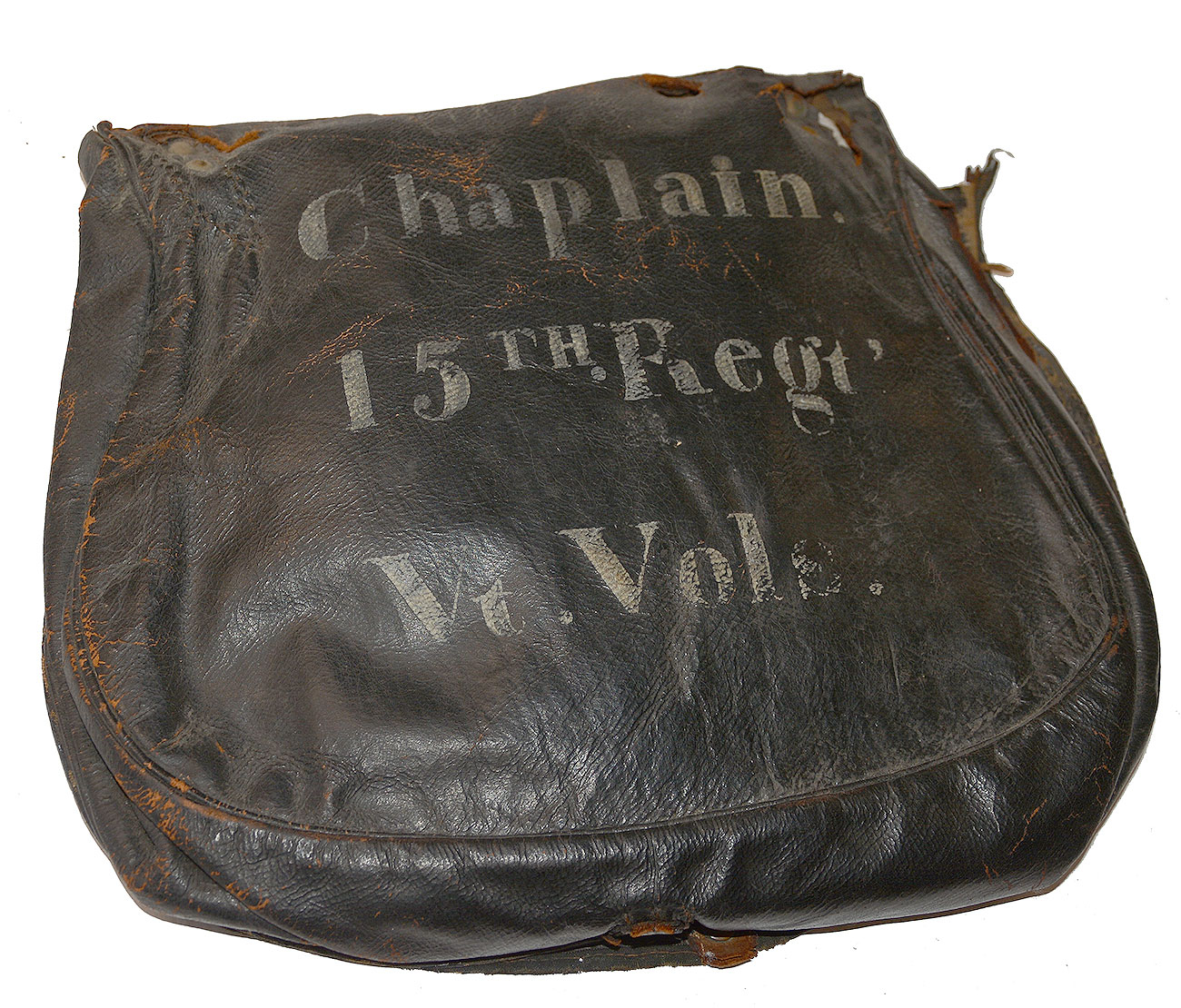
Hover to zoom

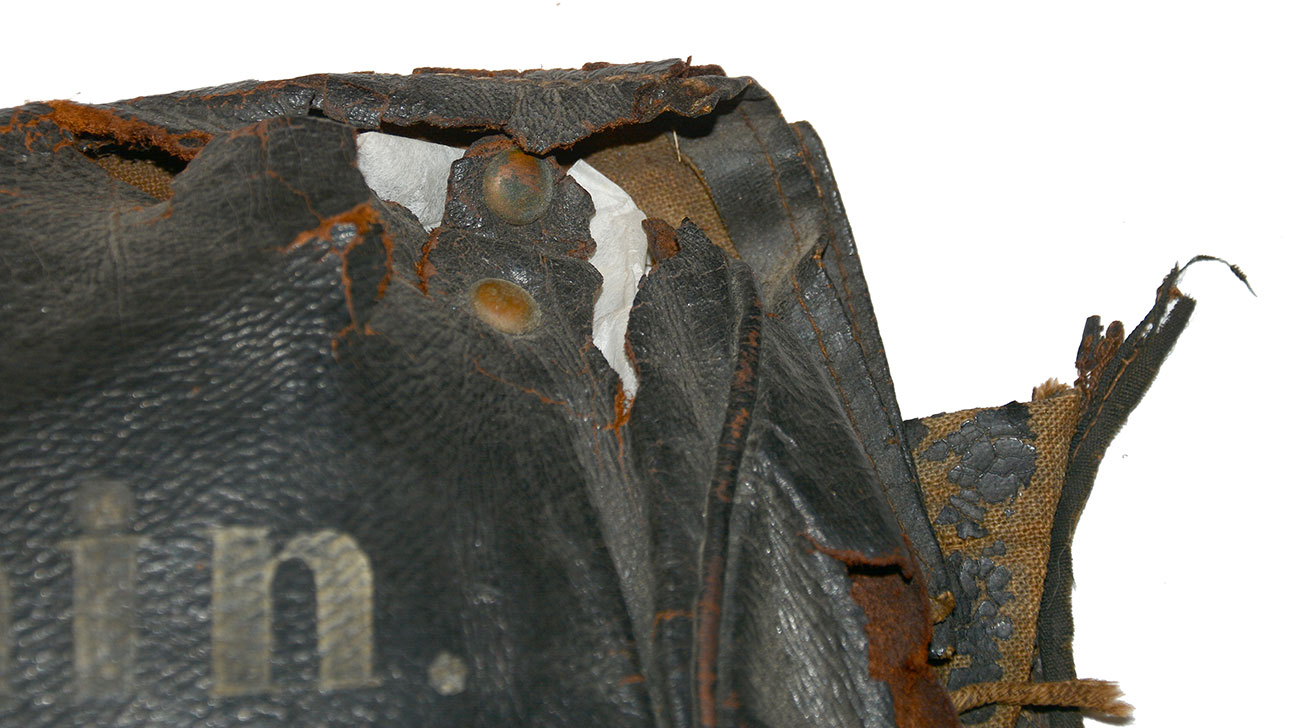
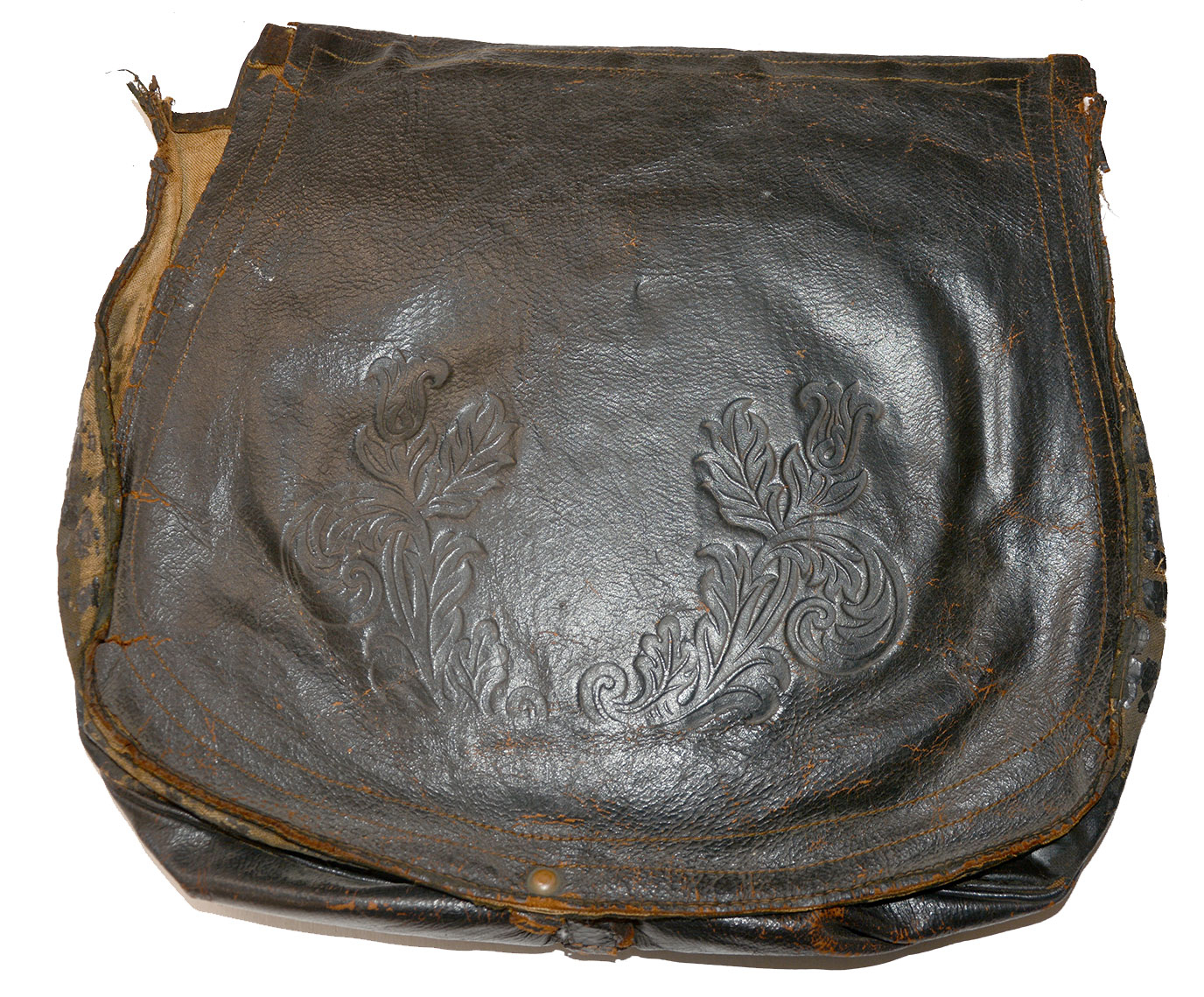
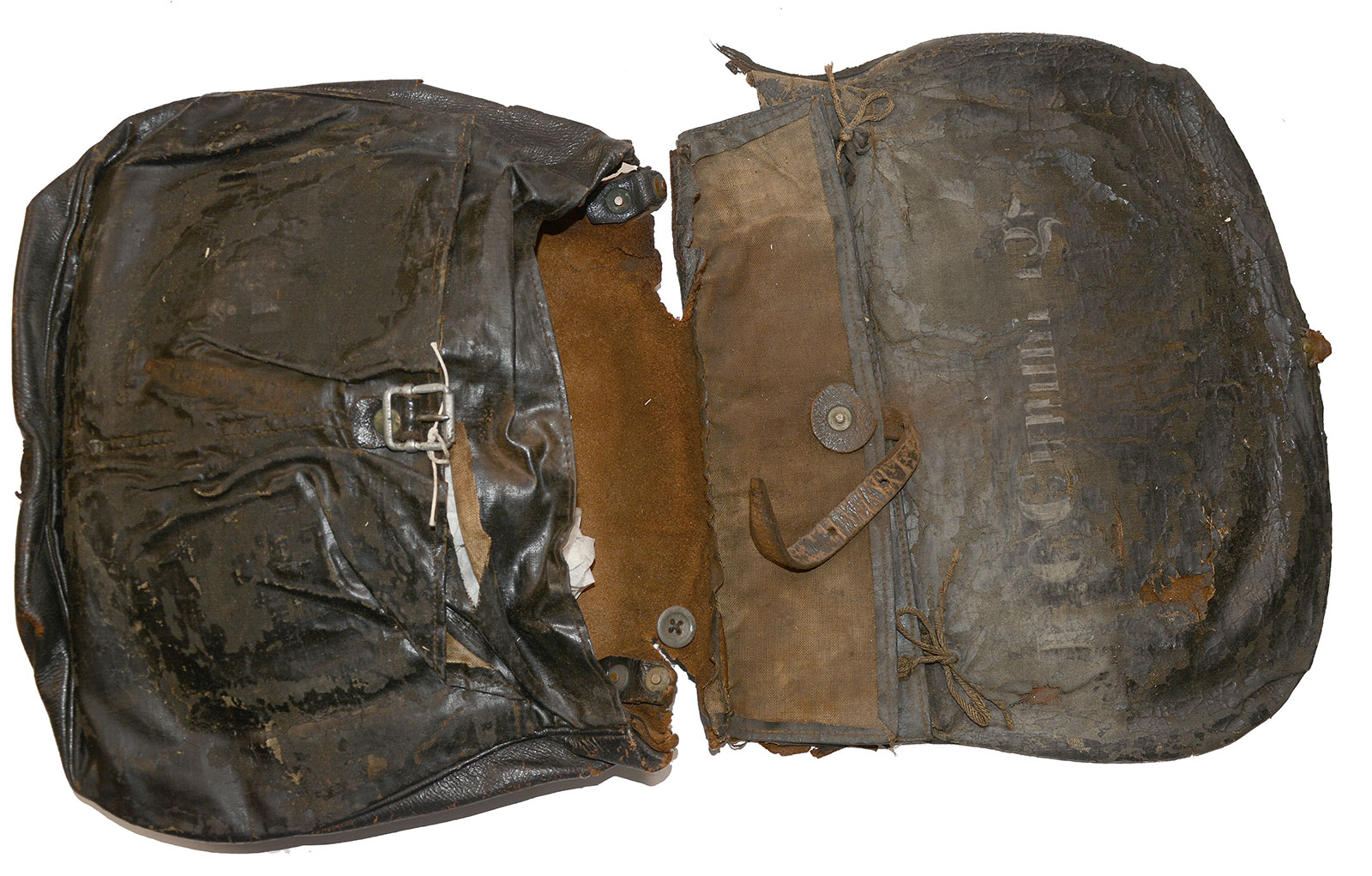
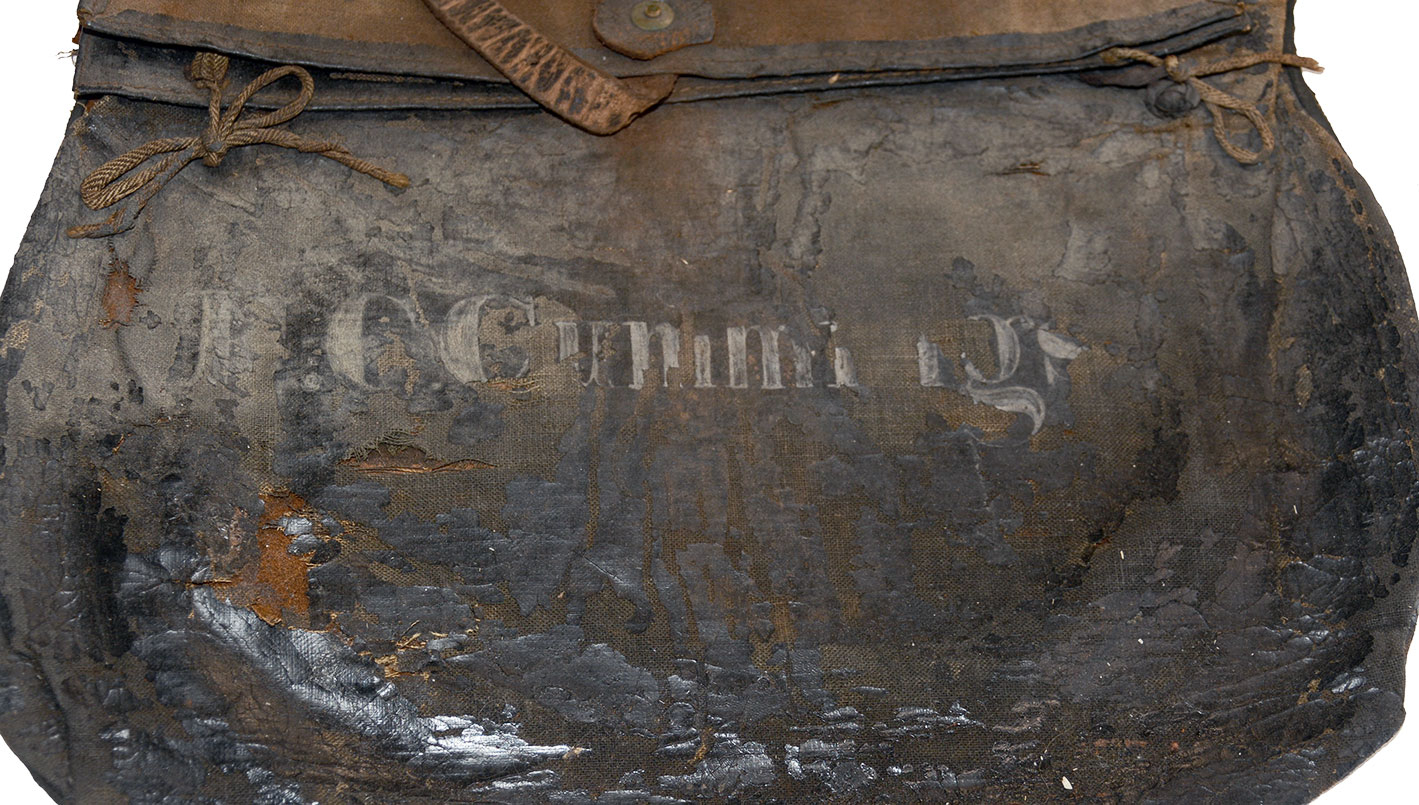


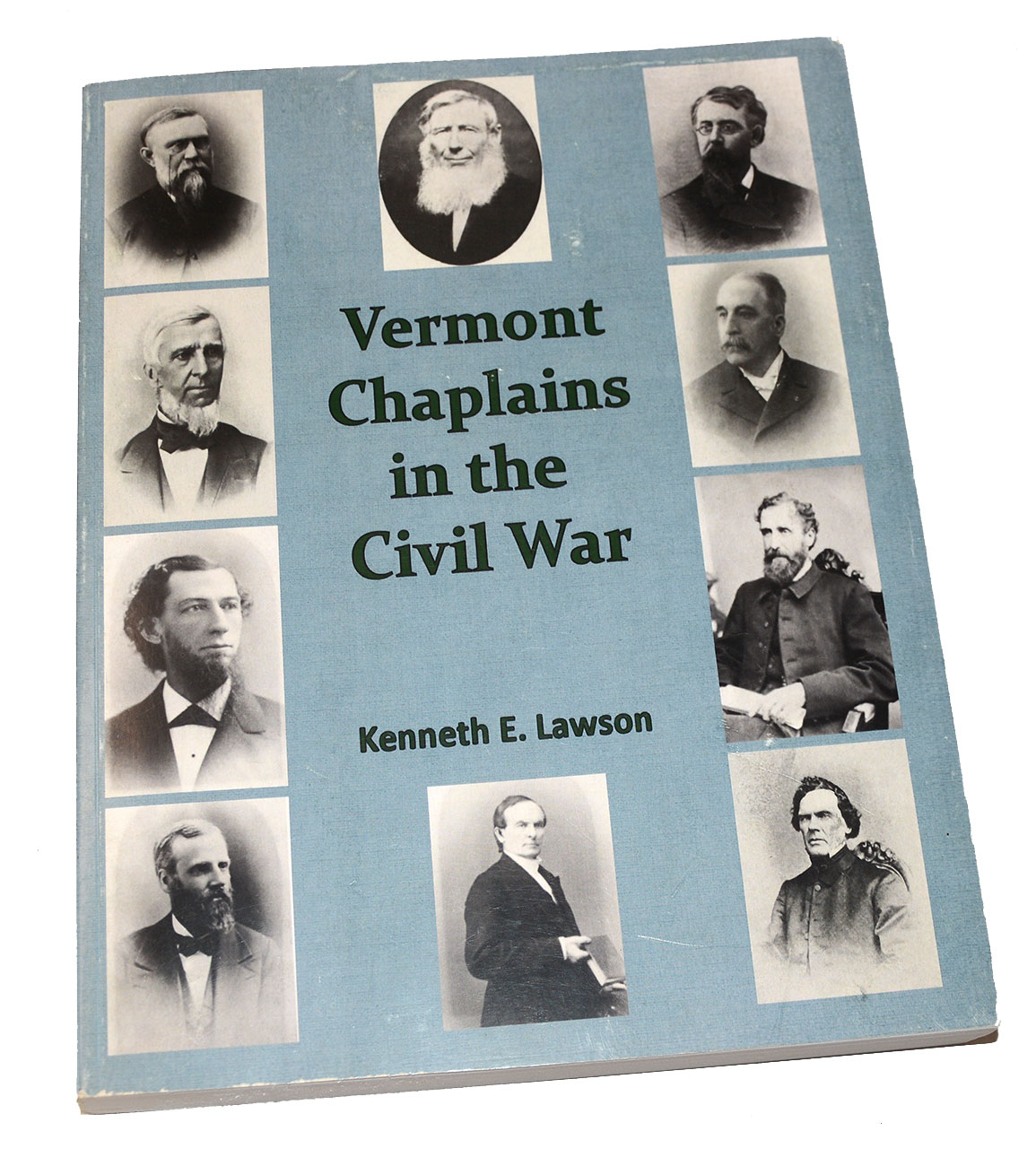
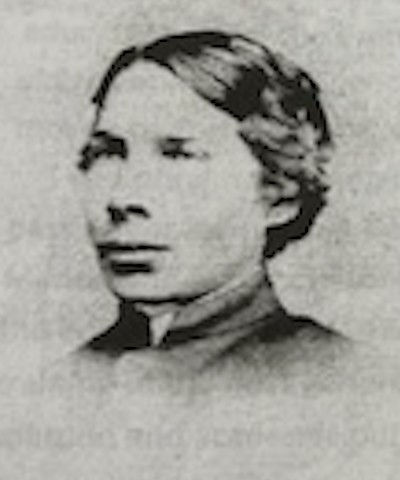
$3,250.00
Quantity Available: 1
Item Code: 2025-1851
Shipping: Determined by Method & Location of buyer
To Order:
Call 717-334-0347,
Fax 717-334-5016, or E-mail
Material related to Civil War military Chaplains is extremely hard to find. This is a commercially produced “officer’s style” haversack with a great stencil in white on the reverse indicating its owner was the “Chaplain / 15th Regt’ / Vt. Vols.” The regiment had only one Chaplain: Ephraim Chamberlain Cummings, who was with the regiment throughout its service. As an item of personal field gear, this is a great reminder that while in the US Army chaplains might be assigned to a post, during the Civil War they were also appointed in volunteer regiments to serve the spiritual and moral needs of the men on campaign and in the field, and fill in on other non-combatant tasks where they could. Students of Gettysburg will be familiar with the fate of Chaplain Howell of the 90th Pennsylvania, who was shot dead on the steps of the College Lutheran Church where he had been aiding medical personnel in an improvised field hospital. The 15th Vermont, or portions of it, were officially credited with three engagements: Fairfax Court House, Va., (Repulse of Stuart's Raid), Dec. 28, 1862; Catlett's Station, Va., (Lieutenant Hartshorn and train guard), May 30, 1863; Companies H and K, Gettysburg, Pa., July 1, 2 and 3, 1863.
Like other line officers and members of the field and staff, Chaplains- had to supply their own uniforms and gear, hence the frequent designation of commercially produced and privately purchased haversacks like this as an “officer’s haversack,” though they occasionally also show up worn by enlisted men who wanted something a bit better than government issued painted canvas bags to hold their food, eating utensils and whatever other personal items they could store in them.
Cummings apparently put this to good use in the field, but it displays well. The shoulder sling is gone and there are tears along the top on the bound edges, but it preserves all of its decorative, foliate embossed outer flap and the stencil on the back side is bold, very visible, and fully legible, and would make a strong addition to any collection relating to the regiment or to chaplains and religion in the war.
Born in Maine in 1825, Ephraim Chamberlain Cummings in his youth worked for an uncle who edited the Christian Mirror, a Congregational newspaper. He entered Bowdoin College in 1844, but had to take time off for health reasons, and while doing so continued to aid his uncle. He finished his education, however, graduating in 1853, and in 1858 became a Congregational minister. He moved to St. Johnsbury, VT, in 1860, to minister at the North Congregational Church and built up a good public reputation, taking a nine-month leave to serve as Chaplain of the 15th Vermont in 1862. Appointments of regimental Chaplains were supposed to take strongly into account the opinions of all the men in a regiment, officers and enlisted alike, so he was certainly, widely well regarded.
The regiment was recruited under Lincoln’s August 4, 1862, call for nine-month troops. Cummings date of enlistment is given as August 29, which puts him in service very early, actually before the official organization of the regiment. The Colonel and Lieutenant Colonel later penned a short regimental history, which we quote:
“THE Fifteenth regiment was organized September 26, 1862; went into barracks at Brattleboro, October 8; was mustered into service October 22; started for Washington October 23, and arrived on the morning of the 26th, in a drenching rain. It remained at the "Soldiers' Rest" till next day, when it went into camp on Capitol Hill. An order constituting the Second Brigade of five Vermont regiments was issued October 27- Colonel Blunt commanding until December 7, when General Stoughton took command. October 30, the brigade crossed into Virginia. The Twelfth and Thirteenth went November 1 to Hunting Creek. The Fourteenth and Fifteenth returned to Capitol Hill, and in three or four days, with the Sixteenth, joined the Twelfth and Thirteenth near Hunting Creek, establishing what was known as "Camp Vermont." This camp was in a low malarial place, and the mortality of the brigade, especially the Fifteenth regiment, was very great for the six weeks it was there, and for some time thereafter. The time was spent in stockading tents, in drill duty, on the picket line, and in fatigue duty on Fort Lyon. November 25, on a dark, rainy night about ten o'clock, Colonel Randall, of the Thirteenth, with his own and the Fourteenth and Fifteenth regiments started for Bull Run, then the outer picket line in the defenses of Washington, for the purpose of more effectually guarding the Orange & Alexandria railroad. They made a slow, weary march amid darkness and drizzling rain till about four o'clock A. M., when the rain had turned to snow and the command bivouacked on the left side of the turnpike about two miles short of Fairfax Court House. The next night the Fifteenth bivouacked near Fairfax Station in a sapling pine grove, on old tobacco grounds, the camp fires lighting up in a weird way the dense growth of small but tall pine trees. Next day it went to Union Mills and took position about half a mile to the right of the station, relieving the Garabaldi Guards, Colonel D'Utassy. The regiment remained here till December 4, when Colonel Proctor received an order relieving it from this duty about three o'clock P. M. At four the regiment was in line for movement on "Camp Vermont." It halted a little after dark in a chestnut grove about one mile south of Fairfax Court House. After coffee and a brief rest the regiment completed the march to "Camp Vermont," of about thirty miles, before midnight. December 12 the brigade left "Camp Vermont" for good and went to Fairfax Court House, the Fifteenth establishing itself in the chestnut grove above mentioned. Here fine stockades and officers' quarters were constructed from the large, straight grained chestnut trees which were easily split into planks and boards. December 28 cannonading was heard at Wolf Run Shoals, and the Fifteenth was ordered to Centreville, and at dark had a picket strung from near Blackburn's Ford up Bull Ran past the Stone Bridge. The cannonading at Wolf Run Shoals was followed by Stuart's cavalry raid in rear of Fairfax Court House. At about nine o'clock orders came from General Stoughton to fall back to the Court House. The picket was promptly withdrawn, and everything ready at about eleven o'clock to execute the order, when another order came from General Stoughton to "hold Centreville at all hazards." Thereupon pickets were again thrown out guarding every approach to the town, and the whole regiment kept ready for action the entire night. But Stuart did not come that way. The next morning he went out of the Union lines at Aldie, just north of Centreville. In a few days the regiment returned to Chestnut Grove camp, and soon thereafter moved to Fairfax Station, where it remained till spring, engaged in drill, both battalion and brigade, and fatigue work on rifle pits southeast of station. May 7, the Fifteenth regiment went to Bealeton Station, and on the next day General Stoneman's cavalry came out at that point from their extensive raid in rear of Lee's Army. Here the regiment and Stoneman's cavalry did picket duty together for several days, when the regiment returned to duty on Bull Run, camping at Union Mills. General Stannard took command April 20. May 30, 25 men from the Fifteenth, upon a supply train, under Lieutenant Hartshorn, near Catlett's Station, were attacked and overpowered by two or three times that number under Mosby, with a piece of artillery, and the train was partially burned. About June 10, the Fifteenth was ordered down the Orange & Alexandria railroad--four companies with Lieutenant-Colonel Grout at Catlett's, and the other six, under Colonel Proctor, at Bristoe. Late one night the four companies fell back to Bristoe under orders from General Buford, and in a day or two the whole regiment under orders from Stannard, returned to Union Mills, having improvised transportation for camp and garrison equipage from what was left of trains burned at Catlett's and Bristoe by Jackson the year before; while General Buford, just across Kettle Run, at Catlett's, burned his supplies and stores for want of transportation. June 25, at three o'clock P. M., the whole brigade left Union Mills on a forced march to join the First Corps, Army of Potomac, to which it had been assigned, and which it overtook at Gettysburg on the first day of the fight. The day before at Emmittsburg the Twelfth and Fifteenth had been detailed to guard the corps train, which they accompanied July 1, to within about two miles of Gettysburg, where, under an order from General Sickles, whose corps was moving rapidly to the relief of Howard, the Fifteenth went upon the field, and, a little after dark, joined the Thirteenth, Fourteenth and Sixteenth in a wheat field to the left of Cemetery Hill. Next morning the four regiments were placed in support of the batteries on Cemetery Hill. Just about 12 o'clock M., General Doubleday, commanding the First Corps, learning that the Fifteenth, to which had been assigned by Reynolds the day before guard the train, was on the field, and being disquieted also, by reported attacks upon the train by Stuart's cavalry, ordered the Fifteenth to overtake the train with the least possible delay and rejoin the Twelfth in guarding it. Two companies of the Fifteenth, with two from the Twelfth, were left in charge of First Corps ammunition train near the field. The regiment found the train at Westminster the next forenoon. From Westminster the regiment went with the train via. Frederick City and South Mountain towards Hagerstown, and rejoined the brigade in front of Funkstown. On Sunday, July 12, the army formed in line of battle in front of Hagerstown, the Vermont brigade taking position on the right of First Corps, and Lieutenant-Colonel Grout, of the Fifteenth, with 200 men from the Sixteenth, went upon the skirmish line. Two days later Lee crossed the Potomac, and a few days after that at Berlin, Md., the regiment took the cars for home. It reached New York in the midst of the draft riots. Its term of service was then up, but at request of General Canby, commanding in New York, it remained till quiet was restored. It was mustered out August 5, 1863, at Brattleboro, Vt.”
After discharge, Cummings returned to his congregation in St. Johnsbury for a brief time. He married in 1866 and in 1869 took a leave to travel to Europe with his wife, but resigned shortly after his returning to America, moving to Maine, also his wife’s birthplace, in 1871. He taught at Bowdoin College 1872-73 and then turned to private study and scholarship in theological and historical research, publishing several books and occasionally preaching at the Park Street Unitarian Church in Portland where he died in 1897. [sr][ph:L]
~~~~~~~~~~~~~~~~~~~~~~~~~~~~~~~~~~~
THIS ITEM, AS WITH ALL OTHER ITEMS AVAILABLE ON OUR WEB SITE,
MAY BE PURCHASED THROUGH OUR LAYAWAY PROGRAM.
CLICK HERE FOR OUR POLICIES AND TERMS.
THANK YOU!
Inquire About CIVIL WAR VERMONT CHAPLAIN’S HAVERSACK WITH GREAT PAINTED IDENTIFICATION: 15th VERMONT, SECOND VERMONT BRIGADE
Most Popular
Historical Firearms Stolen From The National Civil War Museum In Harrisburg, Pa »
Theft From Gravesite Of Gen. John Reynolds »
Selection Of Unframed Prints By Don Troiani »
Fine Condition Brass Infantry Bugle Insignia »
Large English Bowie Knife With Sheath 1870’S – 1880’S »
Imported (Clauberg) Us Model 1860 Light Cavalry Officer's Saber »
featured item
A FORAGE CAP THAT "WHISTLES DIXIE"
This coffee-colored wool forage cap was discovered in Morristown, Tennessee in 1964 by a Mr. Robert Walter. Based on the pre-war model 1858 cap it certainly is a wool and cotton blend and measures 3 7/8 inches high in the front and it rises to as… (1268-554). Learn More »


